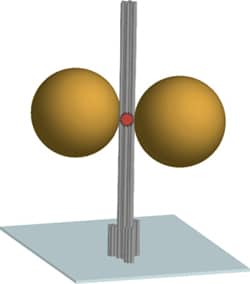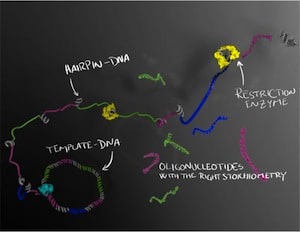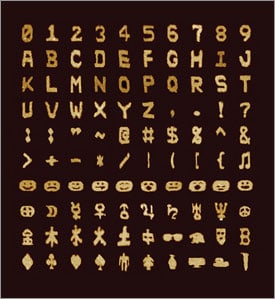A pillar constructed and positioned using DNA nanotechnology holds two gold nanoparticles and a dye molecule to enhance fluorescence over a hundred fold.
DNA nanotechnology positions components to optimize single-molecule fluorescence


A pillar constructed and positioned using DNA nanotechnology holds two gold nanoparticles and a dye molecule to enhance fluorescence over a hundred fold.

Biotechnology-based isolation and amplification of sequence-verified clones of DNA oligonucleotides will provide longer and less expensive materials for building complex DNA nanostructures and nanomachinery.

A set of 310 short single-stranded DNA tiles, plus a few additional short sequences for the edges, has been used to form more than a hundred large, complex DNA objects.
A bacterial virus called M13 was genetically engineered to control the arrangement of carbon nanotubes, improving solar-cell efficiency by nearly one-third.
New software for scaffolded DNA origami makes it easier to predict what shape will result from a given DNA template.
The capabilities of scaffolded DNA origami procedures have been expanded to construct arbitrary, two- and three-dimensional shapes.
DNA springs mechanically control an enzymatic reactions by exerting force on specific parts of the enzyme molecule.
Two recent publications provide more evidence of the growing capability of DNA scaffolds to support complex and interactive functions.
DNA origami structures act as seeds to program the construction of structures up to 100 times larger.
Two independently controlled nanomechanical devices can be positioned on a two-dimensional DNA grid so that they can cooperate to capture between them one of four DNA building blocks, determined by which of two possible states each device is set to.